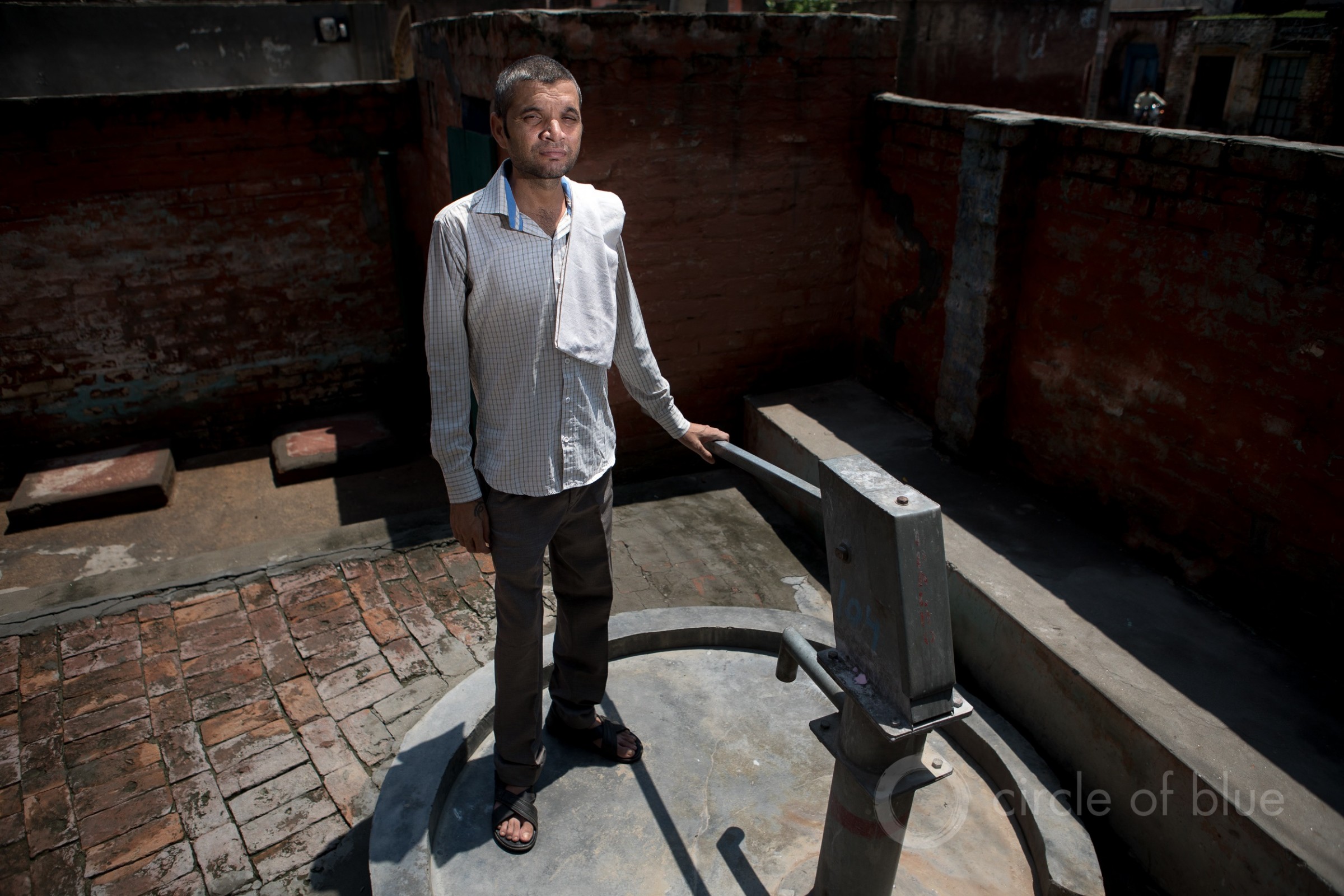The Stream, February 25, 2025: After Record Wildfires, Ash Sullies Bolivia’s Waters; Cholera Outbreak in Sudan Kills Dozens

Many regions in India are facing a groundwater emergency triggered in part by thirsty industries, intensely irrigated agriculture, and hydrological mismanagement. Photo © J. Carl Ganter / Circle of Blue
YOUR GLOBAL RUNDOWN
- Last year’s record-breaking wildfire season in Bolivia is having lasting effects on water supplies, health, and farming industries.
- A cholera outbreak in southern Sudan has killed dozens of people over just three days, after a water supply facility was damaged by militants.
- New climate model research identifies India and the United States as having the most unequal balance between future water demand and supply under different climate warming scenarios.
- A dam overflowed in Botswana’s capital, Gaborone, after a week of relentless heavy rains.
— Christian Thorsberg, Interim Stream Editor
Fresh: From the Great Lakes Region
Nitrate News: Minnesota researchers have found that nitrate levels in groundwater in the Driftless Area — a region in the state’s southeast where harmful herbicide was widely used on crops, particularly in the 1970s and 80s — depend on the age of the water, WXOW reports. Scientists collected water samples at more than 1,200 wells, springs, and streams. Nitrate concentrations in the youngest water reserves, those between 10 and 20 years old, were steady or declining. The researchers hypothesize that more ecologically friendly farming practices and above-average precipitation in recent years have helped to dilute the ion’s presence. Older groundwater, however, is at risk of increasing nitrate levels as younger water moves downward.
Bridge Michigan, Circle of Blue, Great Lakes Now at Detroit Public Television, Michigan Public and The Narwhal work together to report on the most pressing threats to the Great Lakes region’s water. This independent journalism is supported by the Charles Stewart Mott Foundation. Find all the work here.
- Tackling environmental racism in Chemical Valley — The Narwhal
- Snow is making a big comeback in Michigan this year, with more to come — Bridge Michigan
- New York’s proposed PFAS legislation and other Great Lakes states latest efforts to combat ‘forever chemicals’ — Great Lakes Now
- Gone a century, Arctic grayling return soon to Michigan. Can they survive? — Michigan Public
The Lead
Last July through November in Bolivia, some 39,000 square miles of savannah, farmland, and more than 10 percent of the country’s forests were lost to wildfire in the largest seasonal blazes ever recorded, the Guardian reports. Unusually dry tropical forests “were hit hardest.” Flames spread especially quickly across vulnerable land changed by slash-and-burn farming, a technique large agribusiness operations are known to employ.
Before, during, and after the fires, as drought and intense heat carried on, streams ran dry. A limited number of volunteer firefighters and resources meant that residents themselves stood between the fires and their homes and crops. During their defense, many were afflicted with heatstroke, smoke inhalation, and dehydration — 21,000 people last wildfire season were hospitalized with such conditions in the eastern Santa Cruz region alone. Even after the fires were contained, many drinking water sources remain contaminated with ash. Diarrhea remains “an epidemic” with unfit water supplies. Residents in Santa Ana de Velasco, a community in eastern Bolivia, have been forced to move to larger cities due to continued water scarcity.
In addition to ongoing health concerns, the near-total disruption of ecological and community stability is hurting local food production. Small farmers who make a living growing cassava lost much of last year’s crop. This economic hardship, experts say, has meant they are taking low-paying jobs at larger commercial farms and ranches. The growing techniques at these businesses, though, tend to treat soils unsustainably and use large amounts of water.
Recent WaterNews from Circle of Blue
- Republican Attack on Science Targets Water Research that Benefits All — National Science Foundation grants have been reviewed for ideological influence.
- Opinion: The President’s Plastic Trigger — President Trump delights in alarming opponents and aiding friends in polluting industries
This Week’s Top Water Stories, Told In Numbers
58
People killed in Kosti, Sudan, over three days by a sudden outbreak of cholera, the Associated Press reports. Contaminated drinking water has been blamed for the deaths, and another 1,300 people have fallen ill. The White Nile River, on whose shores Kosti is located, has been identified as “the most likely source of infection in the city.” Meanwhile, the area’s water supply facility has been knocked offline by a paramilitary group. This is the country’s second cholera outbreak in less than a year — between July and October last year, more than 600 people were killed and 21,000 fell ill in the country’s eastern region.
In context: Cholera Cases Spike Amid Extreme Weather, Conflict
7
People killed, including three children, in widespread flash floods in Botswana’s capital, Gaborone, last weekend, Reuters reports. Heavy rain fell for more than a week in the southern African country, causing a local dam to overflow. Drone footage shows submerged trees, buildings, cars, and homes. More than 1,700 people were forced to evacuate their homes.
On the Radar
New research published in the journal Nature Communications examines global “water gaps” — defined as “unsustainable water use,” where future demand will exceed supply — under different climate warming scenarios. The work, using climate models, identifies India, the United States, Pakistan, Iran, and China, in that order, as the countries that will have the greatest water gaps under the current climate regime, and under air temperature increases of 1.5 degrees C and 3 degrees C compared to pre-industrial levels.
49th State Focus: Nearly Snowless Winter Disrupts Mushing Culture
Mushers Manage: A conspicuous lack of snow in southcentral Alaska this year has reverberated throughout the sport of sled dog racing, Alaska Public Media reports. Not only did the historic Iditarod race, which usually begins in Willow, move its starting line north to Fairbanks for the third time in the last 10 years, but mushers have been forced to change their training regimens and techniques, swapping sleds for four-wheelers. Breaking sleds, they say, while running in just an inch or two of snow or ice, has become the norm. This year’s three-day “Open” World Championship Sled Dog Races, which is usually run on a 26-mile course through downtown Anchorage for a total of 78 miles, was forced to shorten its route to just a five-mile loop. Even for that event, crews worked hard to transport snow to the otherwise clear course.
Christian Thorsberg is an environmental writer from Chicago. He is passionate about climate and cultural phenomena that often appear slow or invisible, and he examines these themes in his journalism, poetry, and fiction.








Leave a Reply
Want to join the discussion?Feel free to contribute!